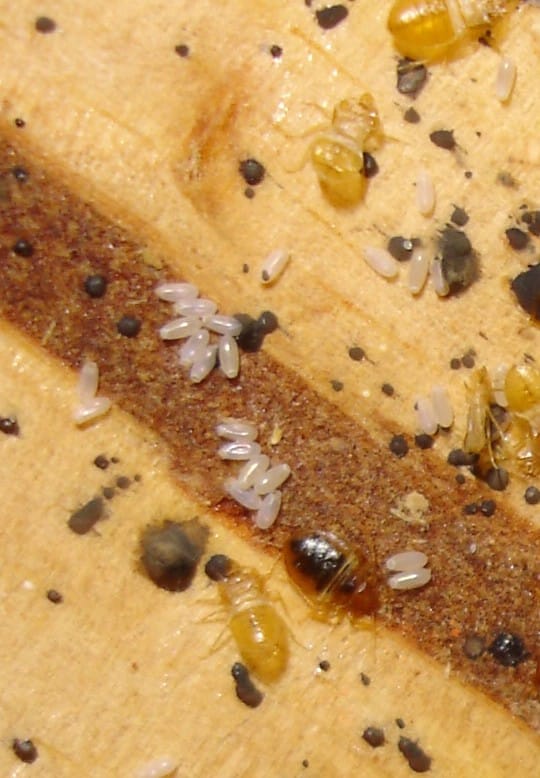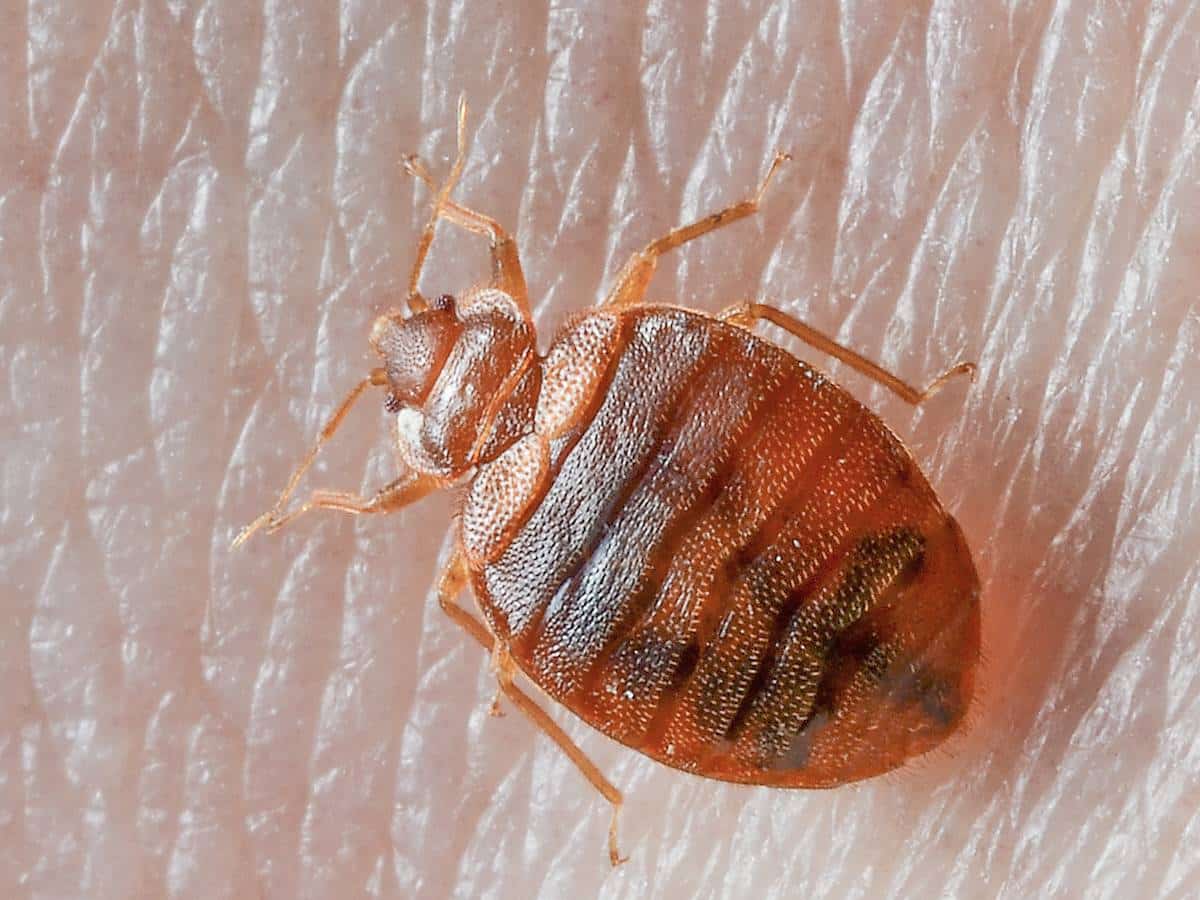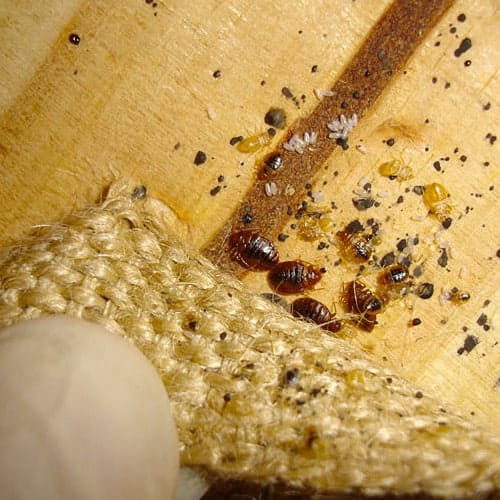Finding a few bed bugs in your home, whether in your bed, furniture, cracks, and crevices, is awful enough. However, it could get worse. Bed bug eggs are these parasites’ secret weapon in continuing their reign of terror in your home.
Bed bug eggs clearly indicate the breeding and multiplication of bed bugs in your home. Therefore, it is in your best interests to take immediate action to address the infestation as soon as you find bed bug eggs. However, before doing so, learn what bed bug eggs look like.
So, let’s discover how to identify bed bug eggs to help you better combat these pesky pests.
What Do Bed Bug Eggs Look Like?
First, you do not need a microscope to see bed bug eggs as they are visible with the naked eye. However, they resemble the eggs of bugs of similar size as bed bugs, so what do bed bug eggs look like?
1. Size and Shape
Bed bug eggs are small, oval-shaped, and typically about 1 mm long, roughly the size of a pinhead or miniature rice grain. They have a distinctive elongated and somewhat cylindrical shape.
2. Color
The color of bed bug eggs varies depending on their age, ranging from nearly transparent, pale yellow, or tan to a darker color. Usually, they are white or translucent, making them somewhat difficult to spot, especially against light-colored surfaces.
Freshly laid bed bug eggs are sticky and tend to adhere to the surfaces where they are deposited, such as cracks and crevices near a bed or other hiding spots. Over time, they become more opaque as they develop and approach hatching.
Bed bug eggs’ white or translucent color helps them blend in with many surfaces, such as the seams of mattresses, cracks, and crevices.
Related Post:
3. Clustering
Bed bugs lay their eggs in clusters or groupings, often arranged in a linear or irregular pattern. The female bed bug usually deposits her eggs close together. When inspecting your home for bed bug eggs, look for groups of small, oval-shaped objects that are stuck to surfaces.
Where Do Bed Bugs Lay Eggs?
Dealing with bed bugs is challenging because these notorious bugs know how to hide and reproduce quickly. Typically, bed bugs lay their eggs in concealed and protected locations near their hiding spots and food source, which is human or animal blood. They also pick places that provide protection and warmth.
If you find insect eggs in the following locations, they probably belong to bed bugs.
a) Mattresses and Box Spring
These are among the most common hiding spots for bed bug eggs, as the warmth and proximity to their hosts make these areas ideal for egg laying. You will find bed bug eggs in the mattresses and box springs and mattresses’ crevices, folds, and seams.
b) Bed Frames
Bed bugs can also lay eggs in and around bed frames. The joints and crevices in wooden or metal bed frames provide hiding places and are close to their food source.
c) Furniture
Check your upholstered furniture, such as sofas and armchairs, for bed bug eggs. During inspection, inspect the seams, cushions, and beneath the upholstery.
d) Carpets and Rugs
Bed bugs can deposit their eggs in your rugs and carpets’ gaps or seams. They are drawn to these areas because they can remain hidden while staying close to where you rest or sleep.
e) Curtains and Drapes
Your curtains and drapes’ folds and pleats can also house bed bug eggs, especially those near your bed or other resting places.
f) Baseboards and Wall Trim
Bed bugs can lay their eggs in cracks and crevices along baseboards and wall trim since these areas provide shelter and are conveniently close to feeding opportunities.
g) Electrical Outlets and Switch Plates
Electrical outlets and switch plates are popular hiding spaces for bed bugs. In that case, it shouldn’t be a surprise to find their eggs in these locations, especially if they can access the interior of the outlet or plate.
h) Luggage and Personal Belongings
Bed bugs can move from one location to another through your luggage or belongings. However, how do bed bugs make their way into your luggage? They can crawl onto your luggage or hide in your items if you stay in an infested hotel room, hostel, or other accommodation.
Luggage and personal belongings offer protection to bed bug eggs and nymphs. The dark, secluded interior of a suitcase or bag can ensure the eggs and nymphs remain hidden and safe until they reach a new location.
In addition, you may unknowingly introduce bed bugs, including their eggs, into your living space if you bring secondhand items such as sofas, chairs, and mattresses into your home.
Moreover, bed bugs can lay their eggs in or on your clothing, bedding, and linens.
i) Books and Clutter
There are many hiding spots in your clutter for bed bugs to live and lay eggs. Bed bugs find items like boxes, bags, clothing, and papers appealing as they help keep eggs and nymphs hidden. The fact that cluttered areas are difficult to inspect or clean makes them conducive for bed bug eggs.
Furthermore, bed bugs can lay their eggs within the pages of books.
k) Near Hosts
Bed bugs tend to lay their eggs close to their human or animal hosts, typically within a few feet, but why is that the case?
Bed bug nymphs require blood meals to grow and molt into adulthood. So, bed bugs lay their eggs near hosts to ensure their offspring can easily access a source of food without traveling far.
Secondly, the proximity to hosts helps maintain the desired temperature range for bed bugs. This makes it more conducive for egg development and the survival of nymphs.
Thirdly, bed bugs reduce the risk of their eggs being inadvertently disturbed or damaged by laying them near hosts. This is because eggs in hidden locations near where people rest or sleep are less likely to be exposed to cleaning, physical disruption, or environmental changes.
Note
You may also find bed bug eggs within the gaps in your walls, floorboards, and even wallpaper seams.
How To Get Rid Of Bed Bug Eggs
You can now distinguish bed bug eggs from other eggs and know where to look to find them. What remains is to eliminate them.
a) Vacuum Thoroughly
Use a vacuum cleaner with a HEPA filter to vacuum all suspected areas, including seams, crevices, and cracks. Pay attention to your mattresses and upholstery’s seams and folds.
A point to note is that vacuuming works partially, so make sure it is not your only eradication method.
b) Heat Treatment
Heat kills bed bug eggs, so wash and dry infested bedding, clothing, and other items. Set your dryer at a high temperature for at least 30 minutes, or wash items in hot water (at least 120°F or 49°C).
For this method to work, the heat must reach every part of the infested items, which can be tricky when dealing with larger items like duvets. However, you can overcome this by drying large items twice.
c) Steam Treatment
Treat seams, cracks, and crevices in furniture, mattresses, and other hiding spots with a steam cleaner to kill bed bugs eggs. The steam will penetrate these areas and kill bed bugs and their eggs, but make sure the steam is hot enough.
Select a steam cleaner that produces dry steam with a temperature of at least 160°F (71°C) or higher. Dry steam contains less moisture and is more effective in killing bed bugs.
d) Seal Cracks and Crevices
Close any cracks, gaps, or crevices in walls, baseboards, and furniture where bed bugs and their eggs might hide with caulk or sealant. Do not use just any caulk. Instead, choose one labeled for use in indoor environments and resistant to pests. Some caulks are specifically designed to deter insects like bed bugs and ants.
e) Bed Bug-Proof Your Box Spring and Mattress Encasements
You should also invest in bed bug-proof encasements to help prevent new infestations and trap and kill bed bugs and their eggs.
f) Professional Pest Control
For a severe infestation or if you find it difficult to eliminate bed bug eggs on your own, seek professional service. The specialized equipment and expertise pest control companies possess help deal with bed bugs effectively.
Note
If you’ve ever had to eliminate bed bugs, you know how resilient these little creatures are, so getting rid of them is challenging. You may need to repeat these treatments over the course of a few weeks to ensure you’ve eradicated all eggs that may have hatched after the initial treatment.
Final Remarks
In your quest to rid your home of bed bugs, one thing you cannot overlook is bed bug eggs, as these capsules grow up to become mature bed bugs. Therefore, to combat bed bugs successfully, it’s essential to not only identify the eggs but also to address the entire life cycle of these pests, from eggs to nymphs to adults. Identify the eggs and kill them before they hatch.

I’m Mike Hyle, an exterminator with 7+ years of experience handling all sorts of pests, including mice, cockroaches, bed bugs, and termites. I also write for Pest Solutions DIY blog to share my knowledge and help homeowners keep their homes pest-free. Outside work, I enjoy hunting, snowshoeing, and exploring nature. Check out my blog for helpful pest control tips!



